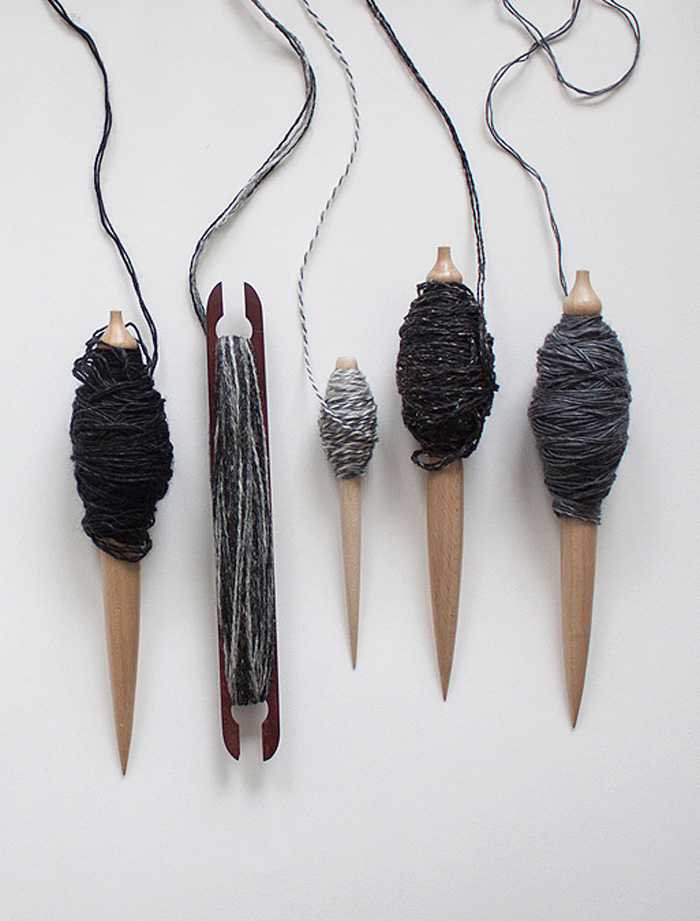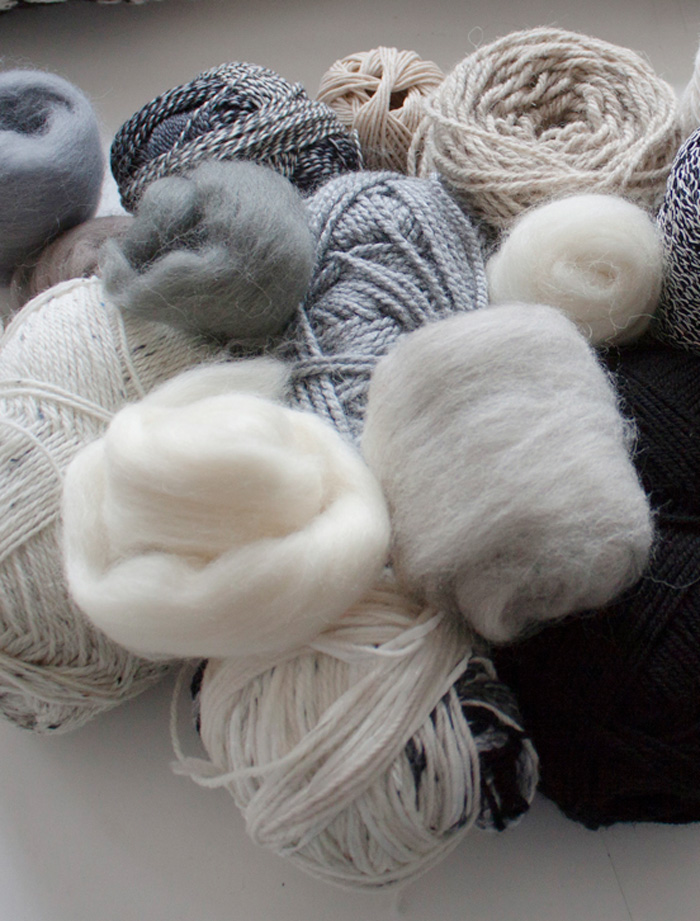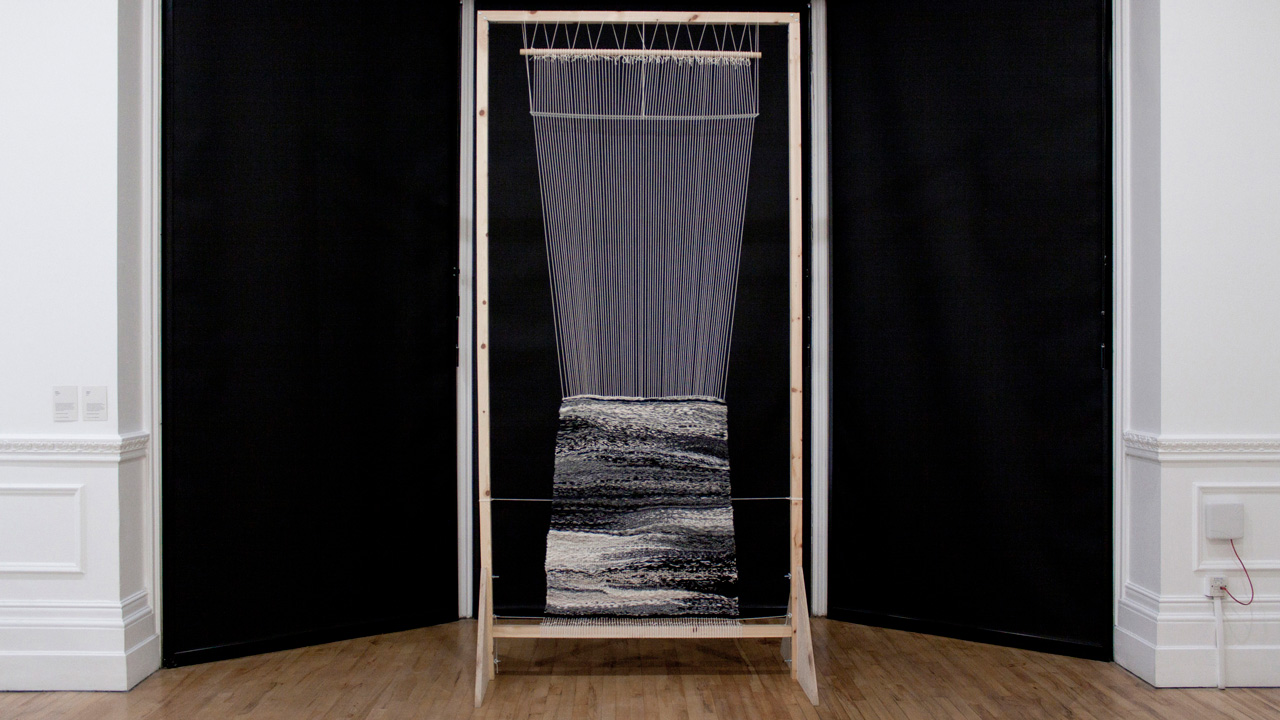
Feed (Who Weaves the Pattern?)
tapestry installation
Henry Moore Gallery, RCA, London
2014
A tapestry was woven collectively during the exhibition by visitors, following the weaving instruction invented by the artist, which encrypted data into woven textile. The installation questioned the exploitation of free personal data in our Digital Age, via the primitive form of a weaving loom and yarns that resembled the iconic textile industry during the industrial revolution.


Audience was invited to participate in creating the tapestry by weaving their names following the given instruction. The instruction translated alphabets into textile units, bridged by the binary code. Each audience subsequently contributed a stream of personal data to the bigger fabric. Using the primitive, low-tech hand weaving technique, the textile piece and the act of weaving simulates our digital life and the unequal data-harvesting phenomenon.
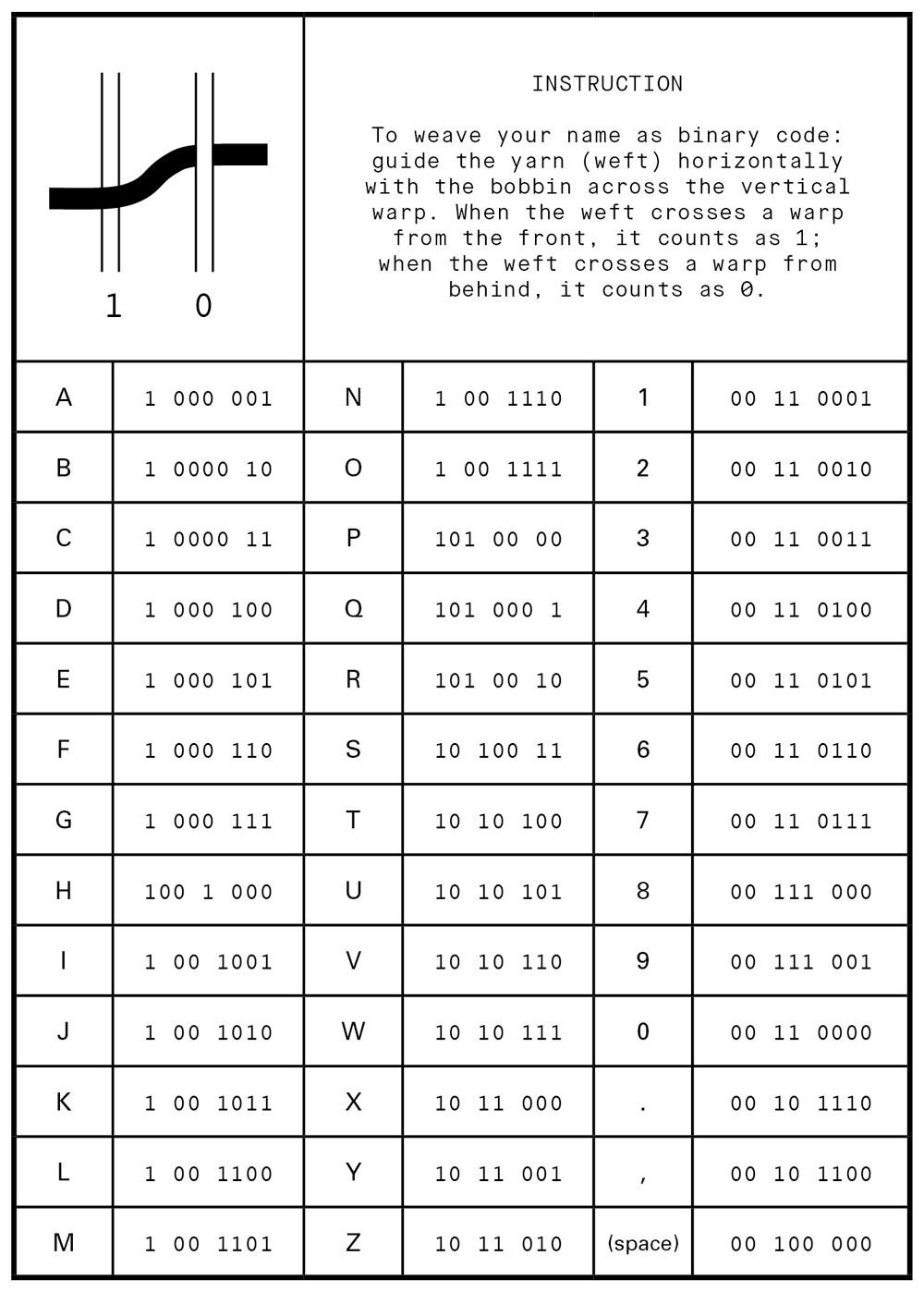
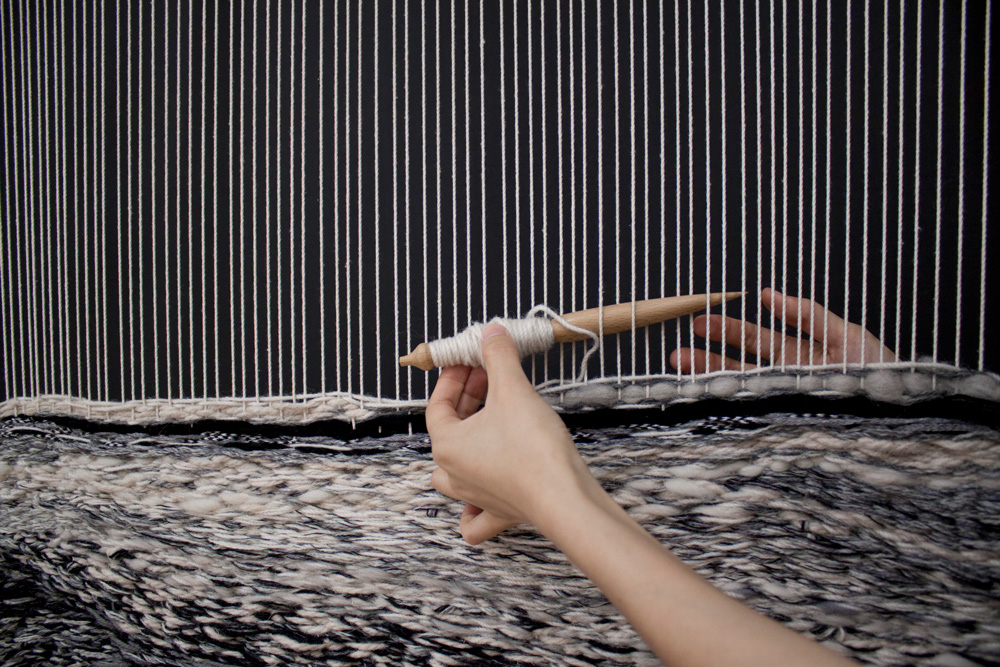
In the history of technology, weaving and information-storage have been sharing many similarities and developed side-by-side. Textiles were used as means of memorising happenings in prehistory. Both techniques read and write data via the bit-based method, human-machine interface; both store and execute instructions in the form of codes. On the old Jacquard weaving loom, pattern informations were stored and read by the weaving machine as punch cards which later inspired the invention of early computer. Till nowadays, most textile manufacturing factories and data centres are both still hidden away from our sight in everyday life.
